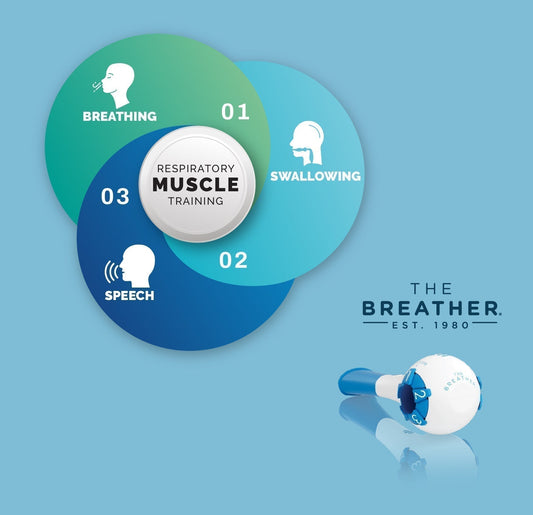Cardiovascular and respiratory functions decline as the age progresses. In old age, physical capacity is reduced due to breathlessness, resulting from breathing muscle weakness and increased cost of oxygen during physical activities. As the ability for physical exercise may be limited in older age, RMT can be used to increase respiratory muscle strength, ultimately improving physical and heart capacity.
RMT increases heart rate variability, the distance covered in the 6-minute walk test, and post-exercise heart rate recovery in healthy old females.
A study with 20 healthy old females showed that using an RMT device twice for 5 weeks significantly improved heart functionality and physical capacity [1].


Background
As age progresses, the heart's vagal components decrease, while the sympathetic components of heart rate variability (HRV) increase [2]. The strength of breathing muscles decreases, and the requirement for oxygen during physical activities increases [3].
RMT has been used to improve breathing muscle strength in adult individuals, thus leading to increased physical endurance. This also has an impact on cardiorespiratory interactions in older individuals. Therefore, RMT can also increase physical fitness and sympathetic cardiac modulation in healthy old women.
A clinical study investigating the effect of RMT on older women
Researchers from the Department of Physical Education and Sports, Fluminense Federal University, Brazil, conducted a trial with 20 healthy, non-smoking older females to assess the effects of respiratory muscle training (RMT) on their physical capacity and heart functions.
In this study, the participants were asked to perform RMT twice a day for 5 days a week for a duration of 5 weeks.
The researchers measured the distance covered in 6 minutes, heart rate variability, and heart rate recovery before and after the 5-week training. They compared it to a control group in which placebo RMT (with very low pressure) was performed.
Results of the clinical study
RMT resulted in a significant increase in distance covered in a 6-minute walk by the participants of the RMT group when the data of post-RMT training were compared between the groups (p=0.004). The results also showed that the heart rate normalized rapidly within 1 minute after the 6-minute walk test in the participants who had performed RMT (p<0.01).
Moreover, after exercise, a significant decrease in heart rate was observed during the first minute of recovery in patients of the RMT group at the end of the study period (after 5 weeks of RMT) compared to the baseline. Therefore, the normalizing of heart rate after the 6-minute walk test increased significantly in the RMT group (p=0.02) after RMT of 5 weeks.
The heart rate variability also improved from the second week by RMT in older women and continued till the end of this study (p<0.01).


Discussion and Conclusion
RMT improved physical capacity and heart function in healthy old women. These results are in agreement with a previous meta-analysis of 7 studies, including 248 participants. According to that meta-analysis, RMT improved inspiratory muscle strength and thickness of the diaphragm in older adults [4].
Moreover, a previous systematic review of 6 studies stated the effects of RMT on cardiac functionality (increase in parasympathetic and decrease in sympathetic modulation) in diseased individuals [5].









